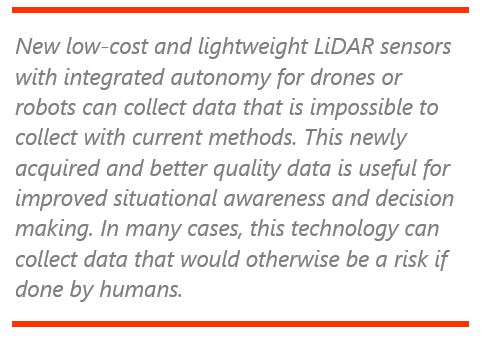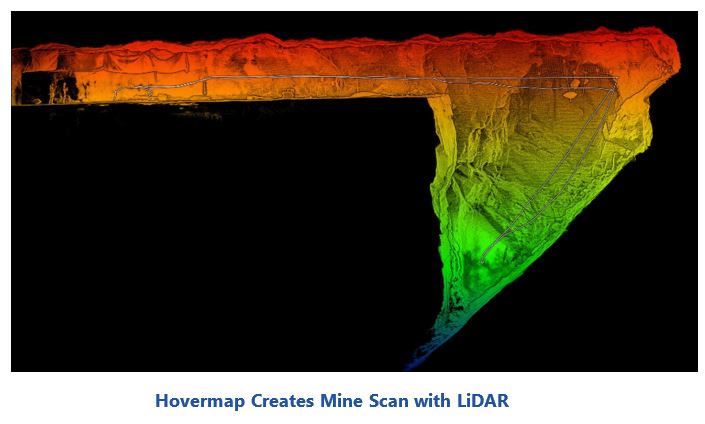Industrial Drone Autonomy Know-how in Mapping
6 min readSummary
Drone inspection and mapping technological innovation has expanded rapidly in the previous 10 years with the improvement of lightweight 
Empowering drones with autonomous navigation has considerably enhanced the potential to accumulate practical data and lower the require for, and fees related with, proficient pilots. Most of us choose GPS for granted right now when touring by vehicle or even hiking in the mountains. GPS is an integral component of many drone surveying and inspection pursuits, but there are some environments like mines, warehouses, tanks, beneath bridges and other covered spaces in which GPS is not obtainable or trustworthy. To handle this challenge, Emesent has formulated proprietary LiDAR-primarily based drone autonomy technologies that further more expands the capacity to survey and inspect previously inaccessible areas or belongings.
A standard drone study refers to the use of a drone, or unmanned aerial motor vehicle (UAV), to seize aerial info with downward-going through sensors, these kinds of as RGB or multispectral cameras, and LiDAR payloads. During a drone survey with an RGB digicam, the ground is photographed many times from diverse angles, and every picture is tagged with 
The Emesent Hovermap alternative is LiDAR based and does not involve GPS. In its place, it takes advantage of a effective Simultaneous Localization and Mapping (SLAM) algorithm to estimate the drone’s placement and orientation from the LiDAR data alone and develop large-element, accurate 3D point clouds. Hovermap not only supplies this LiDAR mapping ability, it also supplies advanced autonomy abilities. It makes it possible for the drone to fly autonomously, self-navigating all-around hurdles even in GPS-denied environments and outside of line-of-sight and communication selection.
This permits Hovermap to be used for mapping in underground mines, beneath bridges or platforms, tanks, and other lined spaces – all from a various array of drone platforms. Its plug-and-play structure usually means it can also be simply taken off from the drone and mounted to a ground robot or utilized for walking scans.
New Measurement Know-how Adds Data that Can’t Be Collected from a Digital camera
When you want to handle a system, the primary concept is to measure and regulate critical variables. When new technology permits you to measure crucial variables, there is an prospect to boost the regulate of that system. With accurate 3D position clouds from the new superior precision light-weight LiDAR, models can be produced to give great insights into each surface and subsurface mining, buildings like industrial procedures, warehouses, properties, bridges, tunnels, and subways.
Hovermap’s rotating LiDAR delivers an omni-directional discipline of see, making sure 3D facts is gathered in all instructions. 3D details is gathered constantly while decreasing shadows. These maps are handy for assessment of erosion, tree measurements, and stockpile volumes. The Hovermap acquired data can be merged with info from additional sensors, these kinds of as cameras or hyperspectral imaging for further knowledge analytics.
One particular of the choices for autonomy is for drones to fly beneath the forest canopy for accurate expansion assessment. This is valuable to cover huge areas of new plantings with no trudging miles or fear of GPS interruptions.
Partnership with Main Mine Setting up Software package Providers
Emesent’s ambition to support mining consumers increase efficiency and improve outputs has led to partnerships with important 
These alliances make it less difficult for mining corporations to adopt new info seize technological innovation by leveraging their current surveying capacity. By seamless import of Hovermap scans into these platforms, users are then able to use the facts for geotechnical examination and problem checking, as-built surveys, volume reporting and style updates. Data from earlier inaccessible spots is bringing new insights and an further degree of detail to mine functions. Partnering with key technological innovation providers in the vanguard is serving to Emesent go nearer in the direction of their vision of a digitally driven mining ecosystem.
Trying to keep Employees Away from Hazard
Underground mines comprise big open voids that are vital to the efficient and secure procedure of the mine. These unsupported voids are a resource of ground falls that can endanger personnel, underground infrastructure, and devices. The conventional process of scanning an open up void is for a surveyor to operate a boom-mounted LiDAR sensor in close proximity to the edge of the void, which is time-consuming (hours), provides very poor quality,
Emesent is increasing the bar for drone autonomy with their autonomous ability for Hovermap enabling venturing into beforehand inaccessible regions to capture details and supply precious insights.
Hovermap pilots can fly an full mission, from acquire-off to landing, making use of only a tablet. Knowledge is processed on-board in serious-time to stream a 3D map back again to the operator. Tapping on the map will established good waypoints, and Hovermap normally takes treatment of the rest, navigating to the waypoints while averting obstacles and finishing the mission autonomously.
Vital Takeaways:
- Flying a mission working with Hovermap’s autonomous functionality does not need any expert drone pilot competencies and can be finished by 1 particular person, thus reducing costs.
- Hovermap can fly outside of line-of-sight and interaction variety in the dim and seize essential information to evaluate the steadiness of geological capabilities and enhance selection-creating in mine safety and structure.
- Emesent’s partnership with key mining software program vendors lets tight integration of Hovermap’s info with mine preparing for open pit and underground mines. This blend is transformational for a digitally-pushed mining ecosystem.
- The capability to identify objects dependent on form in genuine time from LiDAR issue cloud knowledge opens up a world of new opportunities for inspection.
- Autonomous drone operations open up up new possibilities for inspection programs in a number of asset-intensive industries as it cuts down expenses affiliated with high priced, competent pilots.
Summary
The planet has witnessed the creation of entire new industry segments as drones coupled with a variety of sensors have fed a seemingly insatiable need for rapidly, easy accessibility to comprehensive asset information and facts. Drones have offered gorgeous images and videos of organic and man-manufactured buildings as properly as actionable information that can make improvements to the operation of agriculture, constructing and bridge building, offshore platforms, pipelines, transmission lines, disaster response, and quite a few other industries.
Drone technological innovation continues to boost the capture of practical knowledge with the advancement of LiDAR. The advancement of Simultaneous Localization and Mapping (SLAM) based autonomy now presents the capacity to work in GPS-denied environments making use of lightweight precision LiDAR carried by a drone. This autonomous ability indicates that LiDAR can operate in previously unmapped dim, confined areas like mines with small human involvement. This means can make improvements to mine operations and assemble beneficial details devoid of putting humans into hostile environments or do the job on harmful responsibilities.
ARC follows the drone marketplaces for asset inspection and delivery. This new inspection technologies is another instance of how drones can deliver useful info that increases the procedure of industrial activities by growing details assortment and analysis into GPS-denied areas.
ARC Advisory Group purchasers can see the complete report at ARC Client Portal
If you would like to acquire this report or get details about how to turn out to be a consumer, please Contact Us
Key phrases: LiDAR, Autonomy, Drones, Hovermap, Drone Inspection, Robotic Inspection, Surveying, ARC Advisory Team.








